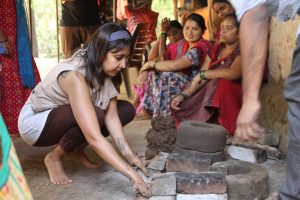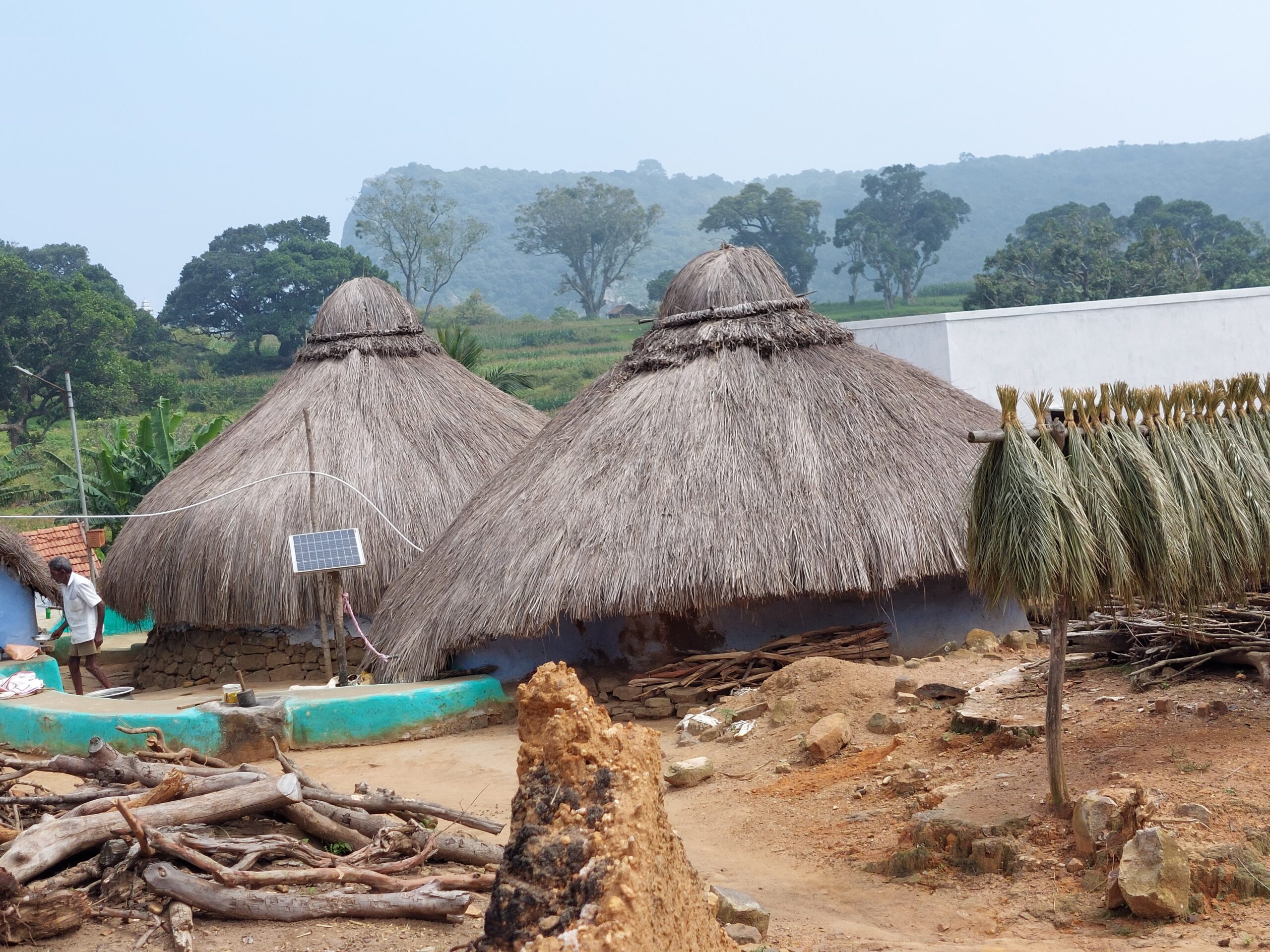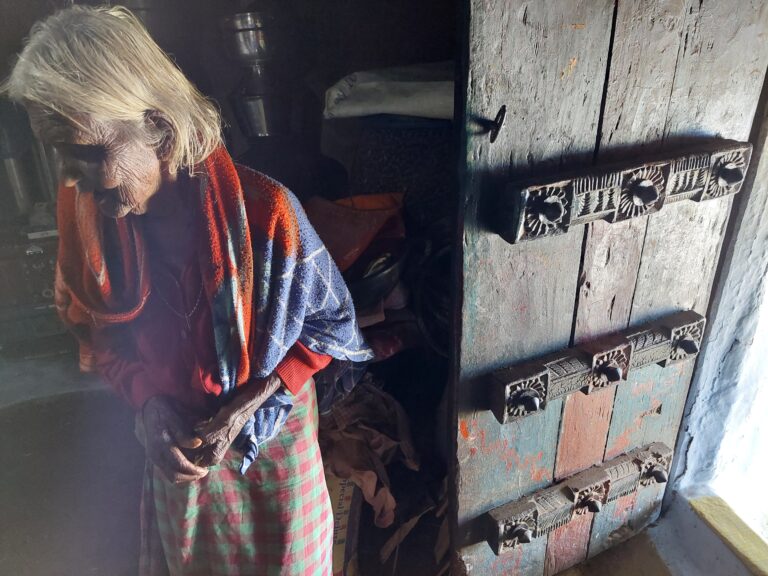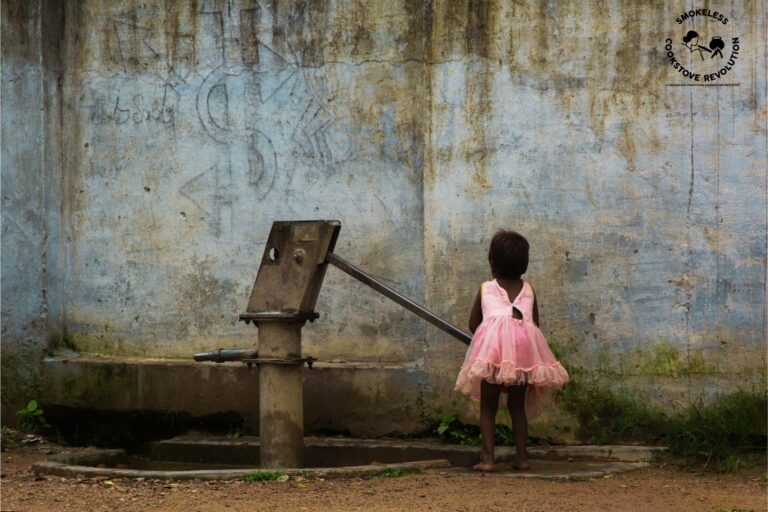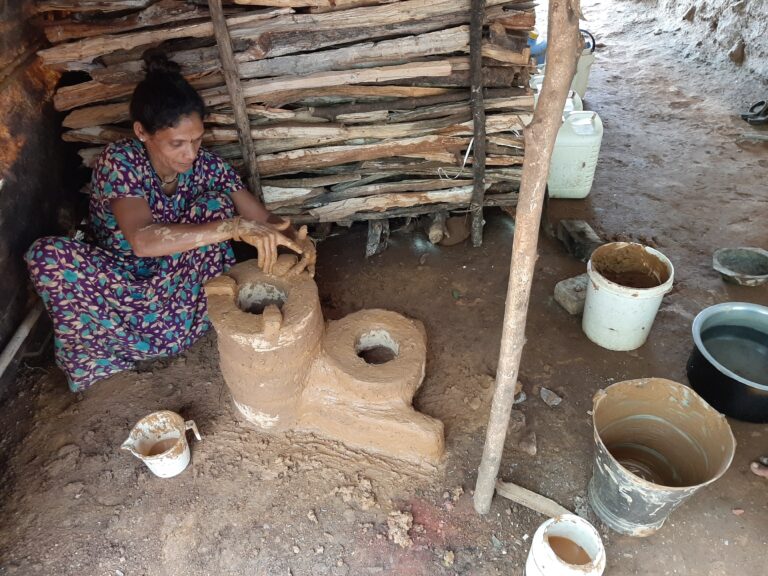Malliamman Durgham – A village name and its presence that has stuck out for me like a mystery, ever since the roll out of a clean cooking project that I have been a part of for the last few months.
But before I go further, I would like to state that this account is not about clean cookstoves and indoor pollution, but an attempt to look at aspects surrounding a unique village and its people from the lens of development, interplay of nature, humans and the wild and a million unanswered questions emanating from this experience. Part of this article is also my humble attempt to document the sheer grit and daunting spirit of the team that works on this project – a bunch of people who would leave no stone unturned to put their most magnanimous effort towards a small but significant transition in a life of these 80 to 100 families living in what can be viewed as ‘Lost in time’ settlement. I decided to write this account in two parts in order to document my experience in a slow and languishing tonality. I hope you understand why I chose a long format writing to share about my day at Malliamman Durgham and read it ‘slow’.
My curiosity for Malliamman Durgham from amongst more than a 100 villages in Sathyamangalam Tiger Reserve surfaced when our field team collected erroneous data on cooking fuel due to some misunderstanding. This erroneous data pointed towards excessive use of Kerosene which made me think about the state of affairs in that village. Under normal and tunnel visioned approach, the village would have been eliminated from the project geography and this data would have been ignored. But due to sheer persistence of the team, we were able to redo the data collection exercise and include the left out HHs to be part of this project.
Why did the team insist on going through this tough exercise again? And why does a village like Malliamman Durgham become so crucial to a project that aims towards cleaner cooking practices? Let me now give you the background to this village (my source for this information is the team that works here and then some wikipedia notes)
This settlement, is situated at 1264 meters above the sea level, in Sathyamangalam Block in Erode District, Tamil Nadu. But crucial point to note is that this mystical village is secluded on a mountain top and can only be accessed through a treacherous 9kms road either on foot or in a highly capable 4&4 or a pick up…’Mahindra’ is the key word and God bless Mahindra engineers for making such machines. https://auto.mahindra.com/suv/thar
I wish they know how crucial these vehicles are for people living in villages like Malliamman Durgham. So, being a closet adventure junkie when it comes to walking/ trekking through roads less travelled or off roading through it, I had a full garden of happy butterflies in my stomach. But, now thinking back to that moment, nothing would have prepared me for everything that unfolded that day in Malliamman Durgham.
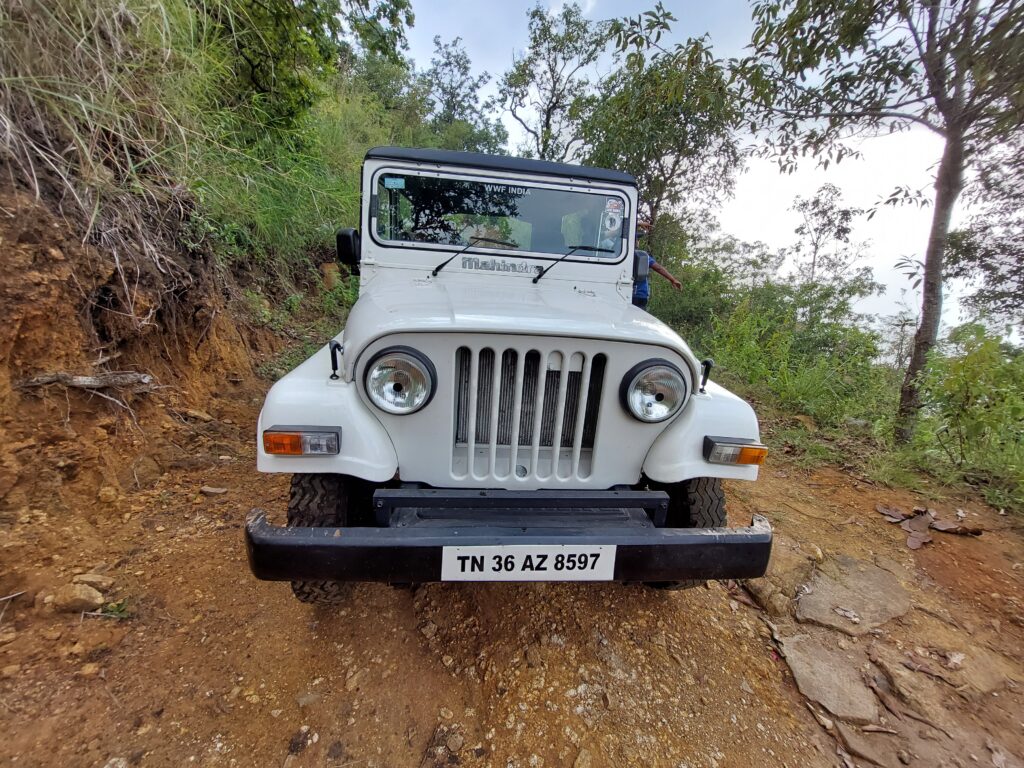
Without going into the details of our team’s composition, I found myself in the rear of a highly capable Thar Di Turbo from the year 2012 and more than 3 lac kms under its belly. Wheel was taken by this team’s leader who is not only a highly skilled 4X4 driver (yes, it’s not everyone’s ride in any way); but a keeper of this tribe, one of exceptional and rare qualities and with a whole lot of integrity, courage and unassuming introverted charm. This point is important here, as lives of more than a few thousands depend on such individuals who have been able to form a bond of trust with a forgotten and extremely marginalized community such as those residing in Sathyamangalam Tiger Reserve as they become integral to the overall development dynamics. He also leads an incredible and dedicated team who works tirelessly in this rather challenging landscape. (Details of team is mentioned at the end of this post).
As we started the journey, we had to unlock a gate to enter this offroad, as Malliamman Durgham is a forest settlement and one can assume that access to this village is restricted, but unlocking a barricade to enter added to allure of this day.
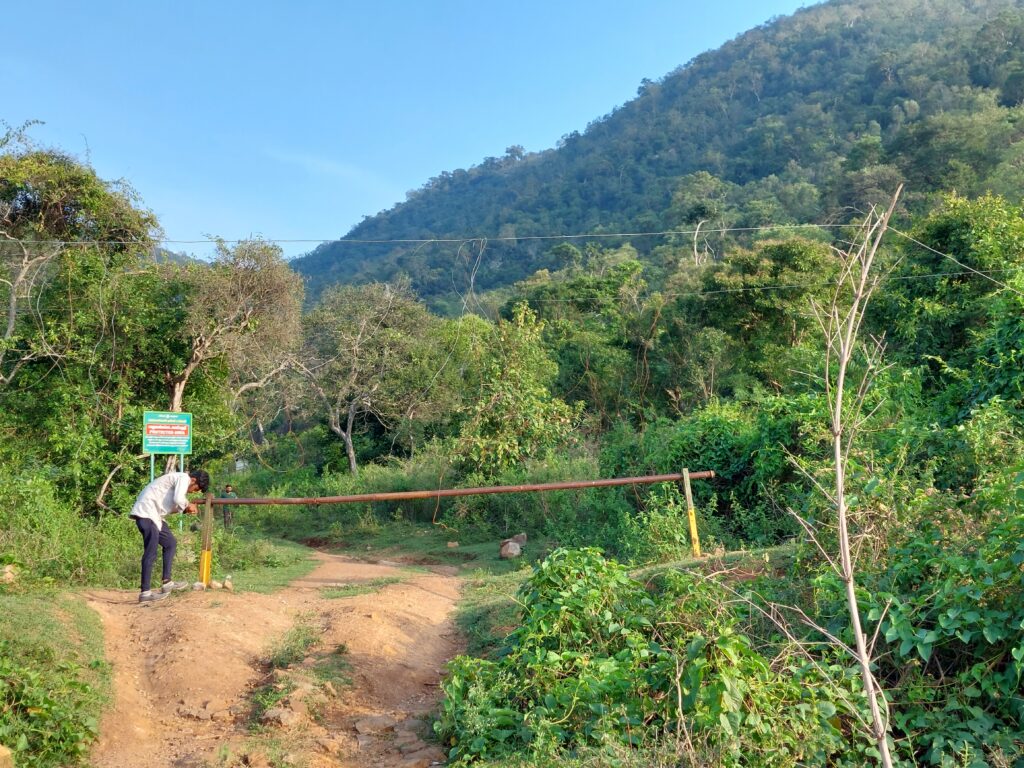
Few meters ahead, and it began to feel like a bumpy roller coaster where parts of being are tossed and turned around continuously like in a ‘mixer’. And it threw my bladder into an overdrive. This was just the beginning of a 9 kms non negotiable road and it would get more treacherous at the bends. But since our driver was the one that I would trust in a situation like this more than anyone else, it was not the driving I was thinking about.
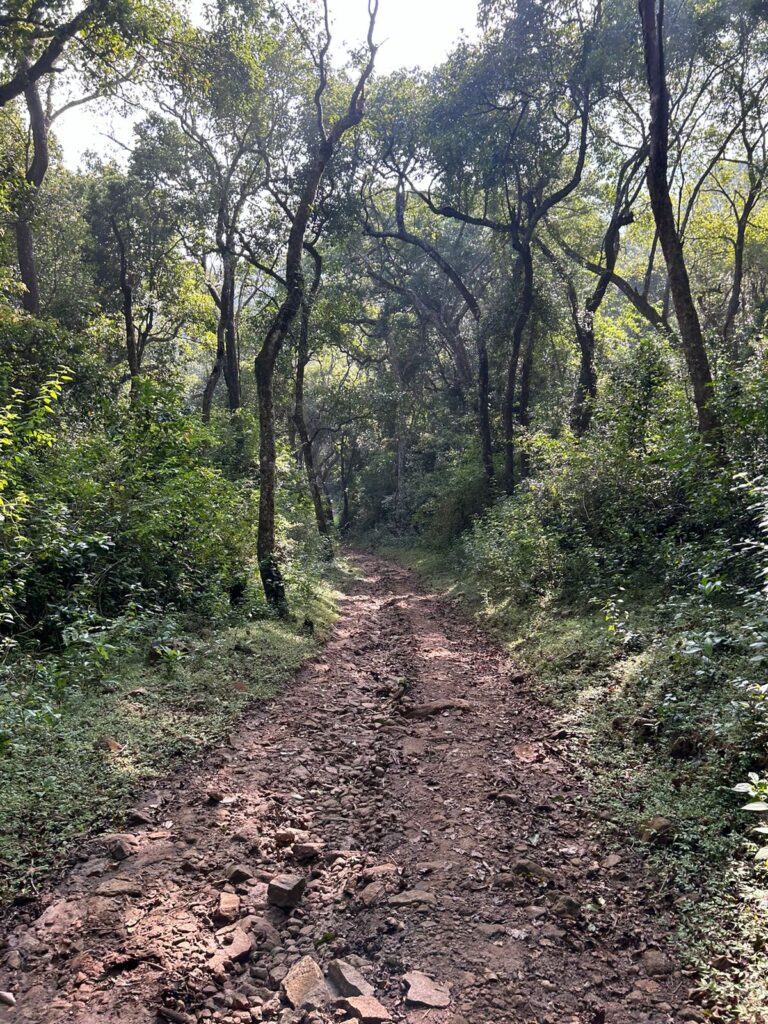
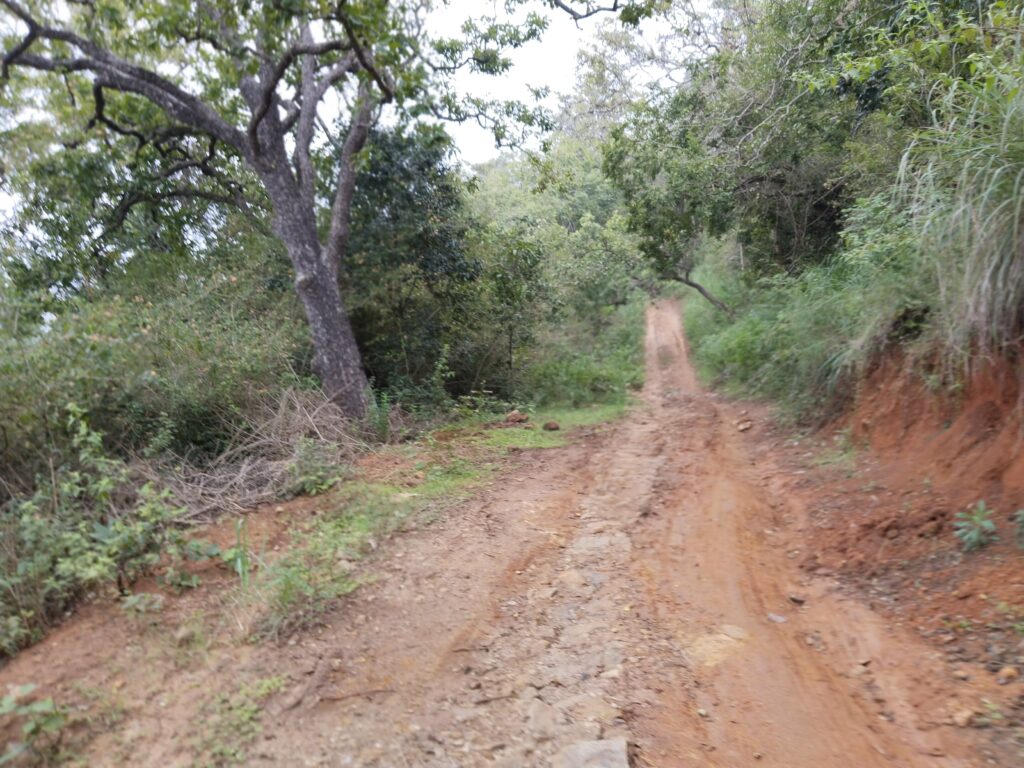
Many questions started to pop in my head. How do these villagers access the outside world? Do they have enough in their village to not access the outside world? What about women who are pregnant and face medical emergencies? (there is absolutely no way she would be able to manoeuvre this journey without an extreme result.) And children and elderly who may have health issues or disabilities? What about the monsoons as this area gets a heavy dose of it? What if there is a serious epidemic, like the Covid Era? How will anyone reach here to help in time?
And then a more fundamental set of questions. What about education? Is it available and if yes, till what level? What about teachers? What about jobs and livelihoods? What about agriculture? Animal conflict? What about access to clean sources of energy? Or any source of energy for that matter.
Did I mention that most of our team who works on this clean cookstove project was following us in a Bolero pick up. This is literally their routine. The only way to access the village. And perhaps, this is the story of so many villages in India, who are tucked away from the outside world. It is romantic and adventurous and one would argue that can we let a few remain as tucked away? But what if – a sick person needs a hospital urgently? And a child wants to go to college? And a woman wants to learn a skill to earn some income? More questions…
Since we are in the business of clean energy, I learnt that the village is off grid and some of the HHs have been installed with solar panels for their basic electricity requirements (lighting up 3 or 4 bulbs at best). I was informed that each HH had been given a small solar panel some years ago but out of those, only 10% are working in condition now.
This was validated when we reached the village and also in my ‘googling’ which I did as a natural reaction to my curiosity.
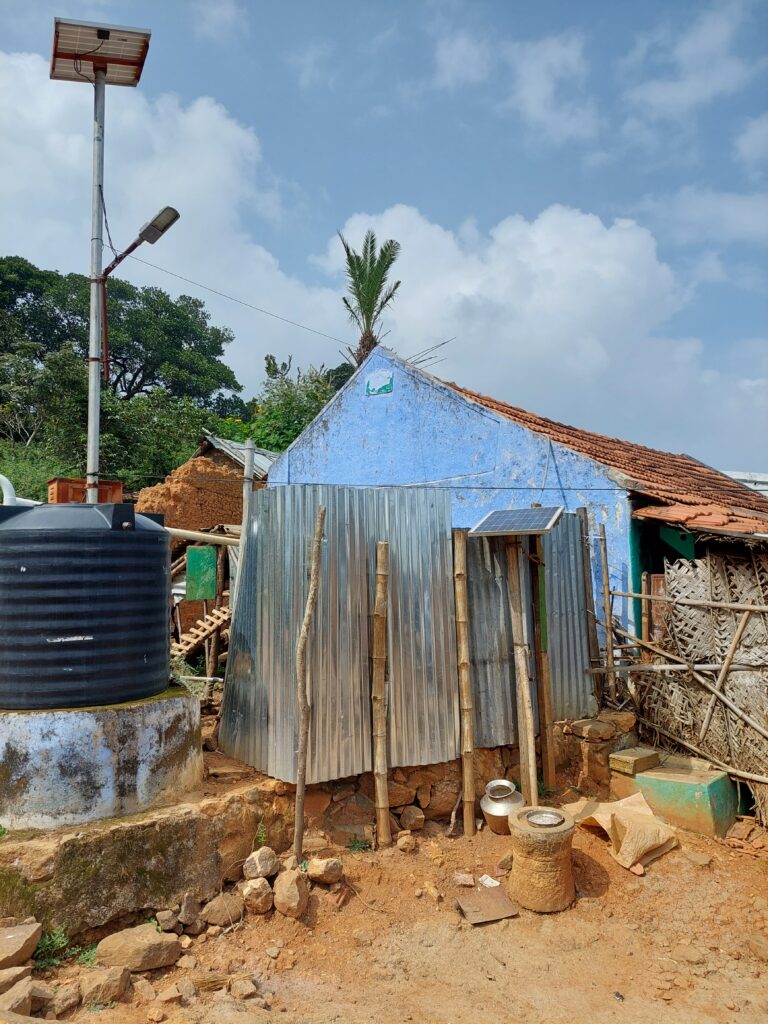
And yes, we finally reached the village in over two hours. But, we stopped for a few minutes at a temple just before the entrance to the village. A temple that also felt like a lost establishment – dating back to the 18th century perhaps, with a huge stone pillar at the beginning. It felt like a powerful structure holding years and years of mysteries and stories unto it. This sacred place had a powerful energy centre – where no words are needed, just silence and birds talking away.
A small anecdote from Wiki is a relevant context here : Named after ‘Malliamman’, a powerful deity, there is evidence that the village has existed for at least two centuries. The evidence includes gun licenses issued by the British Raj and evidence that patas were supplied to the people of Malliamman Durgham.A popular folktale in the area recalls how a stingy Naicker (caste) covered the crops with caps to deprive birds of their food and hence were cursed by the god Malli Amman. The curse brought great difficulties to the Naicker who ultimately went, with other members of his family, into a deep forest and never returned (probably a way of committing suicide by feeding themselves to wild animals). Therefore the people now do nothing to prevent birds and animals from consuming their produce. In fact, 70 percent of their crops are damaged by elephants and wild boars.
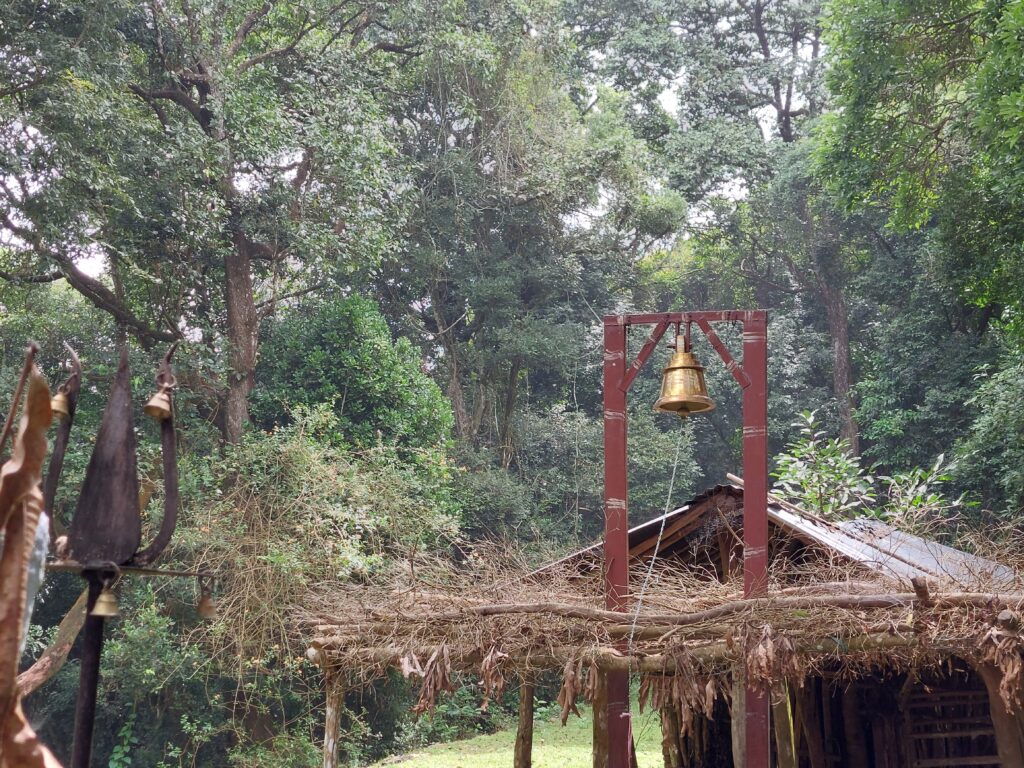
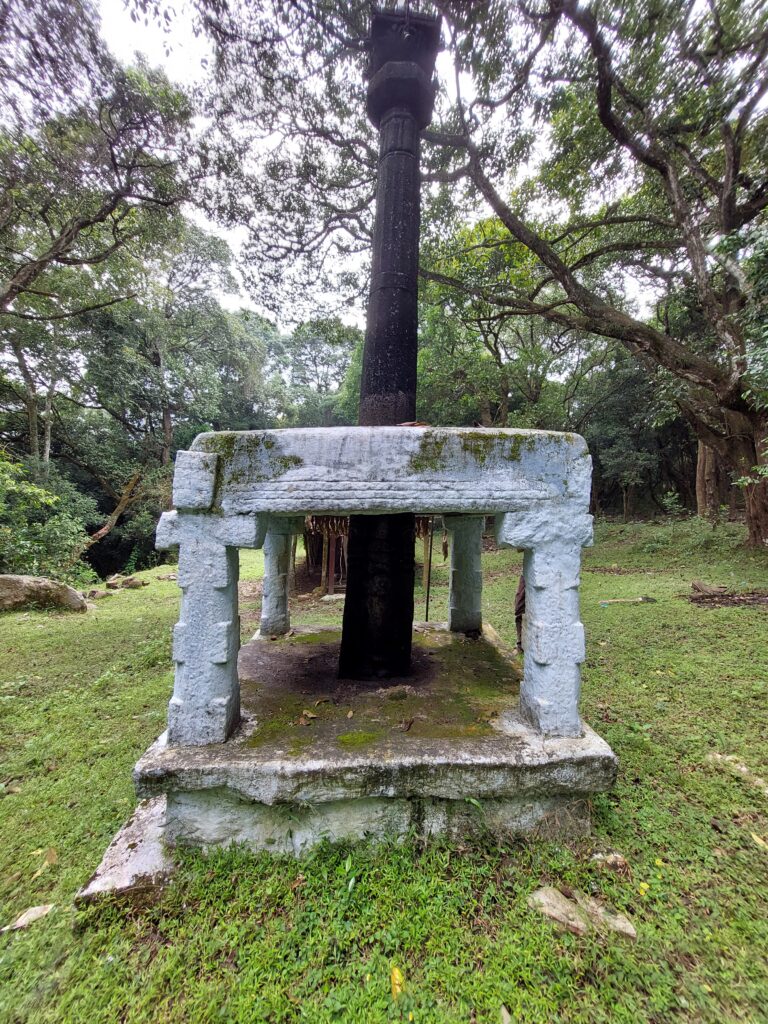
And this seemed true in those few moments of being near the temple. A two centuries old village, it must hold immense wisdom and knowledge through its life… and how much of it is still available, cherished and revered and passed on to its future generation? And in what context? How can we preserve it? More and more questions.
The natural beauty of this village is like a breath takingly beautiful picture perfect postcard. Trees and hill tops overlooking mountains further away, well laid out farmlands and plain areas with fresh gentle breeze caressing everything and everyone who might have the courage to slow down for a few precious moments.
While observing the village and its quiet activities, and waiting for the rest of our team to arrive, I started thinking about the jobs, livelihoods and income generation opportunities for people of this village. That there is agriculture being practiced is obvious, but this being largely practiced for self consumption and since our villages have gone through transition pushing the people towards more expenses than earning opportunities, there is a deadlock here. Malliyamman Durgham is known for its bountiful fruits and vegetables like Papaya, Guava and Jackfruits. The villagers travel to near by villages to sell some of their produce and earn some income. But since we already know about the access roads, its difficult to ascertain, really how much income they could generate. Would it not be prudent to think about solutions like cold storage in order to increase the shelf life of these delicious produce and hence fetch better value? https://www.ecozensolutions.com/
I learnt that most of the younger population have migrated to nearby villages in Kadambur and Sathyamangalam to earn income through odd jobs, labour and driving up and down the village to buy essentials for other households at a small cost. This is where Ramesh comes in. Ramesh has studied Physics up to graduate level. He works as a supervisor on the project and his job is to manage a small team of people from his and some other nearby villages who install improved cookstoves, manage the material delivery and collect the necessary data required for project reporting. Ramesh and his family (he has got his sister and parents involved as stove makers) have been working on this project tirelessly for the last few months and it is only through individuals like him that it’s even possible to work in a village like Malliamman Durgham. Ramesh is very happy working on this project and he is doing a phenomenal job of delivering what his team expects of him under extremely difficult circumstances, but his fate is undecided. This project will finish, sooner than later and then Ramesh will have to go back to being a driver or an odd job labourer. His income will be patchy and dependent on external circumstances providing him and his young family very little sense of security and stability. What is the kind of work that Ramesh would ideally like to do? And what about his degree in Physics? Should he pay the price for belonging to a remote village like Malliamman Durgham? And like Ramesh, there are many young people who are caught up in this dilemma of educating themselves, trying to find an appropriate job worthy of dignity and decent pay, moving away from their homelands and then finally succumbing to picking up just any kind of labour that will give them a chance to earn some income for themselves and their families due to lack of better opportunities.
There are no straight forward solutions here as the dynamics of this problem is far too complex for one linear and partially thought through cookstove project to solve in spite of listing down several SDGs as part of delivered impact, feels more like an academic exercise.
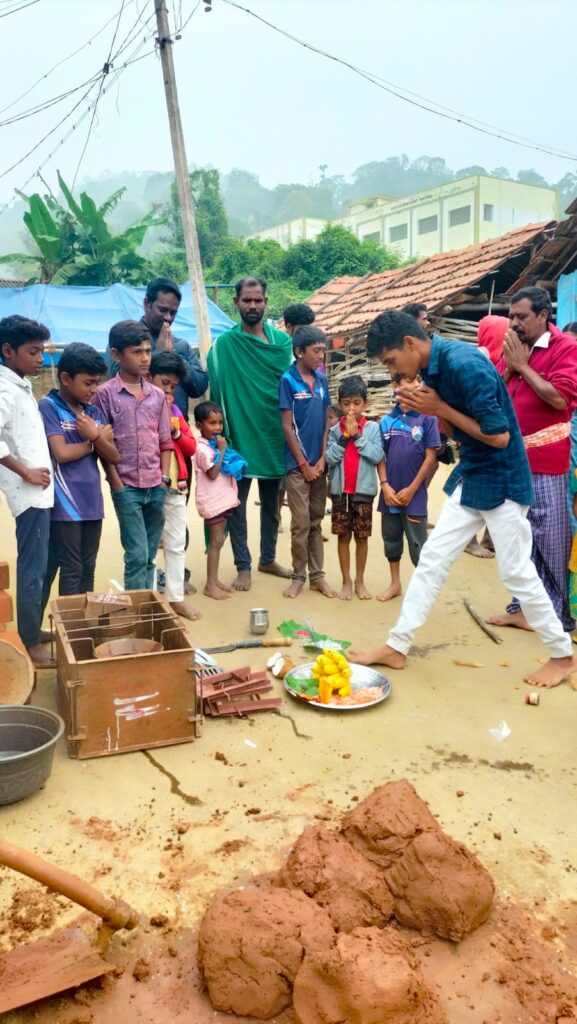
The people living in the village belong to Malayali Community. And, in spite of a difficult life which these communities navigate on a daily basis, for them, everything starts with a prayer – perhaps seeking permission from forces of nature for success and harmony. This is one of the most intriguing and hope giving aspects of working and observing the tribal and other communities – their rituals, traditions and way of life. Worshipping elements of nature and being in sync with them gives our indigenous people immense knowledge and wisdom. This simply cannot be rationalised or analysed by any data dashboards or long drawn excel sheets but can only be felt deep within the souls of these communities who are still trying to live in harmony with nature while people like me, driven by curiosity, making an attempt to acknowledge and honour this wisdom.
Photo credits : Project field team
Continued in Blog Post 2 https://smokelesscookstovefoundation.org/mystical-malliamman-durgham-part-2/
Incredible Project team
Team lead – Steffan Ajay https://www.linkedin.com/in/steffan-ajay-7a488b97/ ;
Esther Manohar – https://www.linkedin.com/in/esther-manohar-147b95284/
Silambarasan K – https://www.linkedin.com/in/silambarasan-k-35519424b/
Others who do not have a presence on LinkedIn or any other social media but have been working silently and selflessly for decades- Paraman Sir, Sekar Sir, Balan Sir, Madavi Mam and the most amazing unit of grass roots community based organisation – Thalavady Adivasigal Munnetra Sangham (TAMS)
About TAMS – TAMS (Talavady Adhivasigal Munnetra Sangham) is a Community-led organization registered as a society functioning since 2000 in Sathyamangalam Tiger Reserve. Tribal leaders living in the protected area entirely run TAMS. Through TAMS and its work, the team is aiming to build a community to secure the forest they have traditionally owned. For nearly two decades after the death of forest brigade Veerappan, this community has seen fast past transition in livelihood patterns, rampant migration, issue of bonded labour, lack of sustainable job opportunities etc. And hence, TAMS current work involves projects on sustainable agriculture, Livelihood opportunities through forest produces, Lantana livelihoods, Health & Nutrition, Watershed management, Human – wildlife conflict interventions amongst others. https://www.facebook.com/profile.php?id=100080768221043&mibextid=LQQJ4d
About the author
Nitisha is the Founder & Director of Smokeless Cookstove Foundation that works with communities across India to create awareness about clean energy and various livelihood linkages connected to clean energy. Her NGO teaches such communities the skill of making an improved mud cookstove model from naturally available materials based on Rocket Stove Technology to help them reduce drudgery emanating from rudimentary cooking methods. She also undertakes various projects related to research and gap analysis on Energy drudgery faced at a house hold level by vulnerable communities
